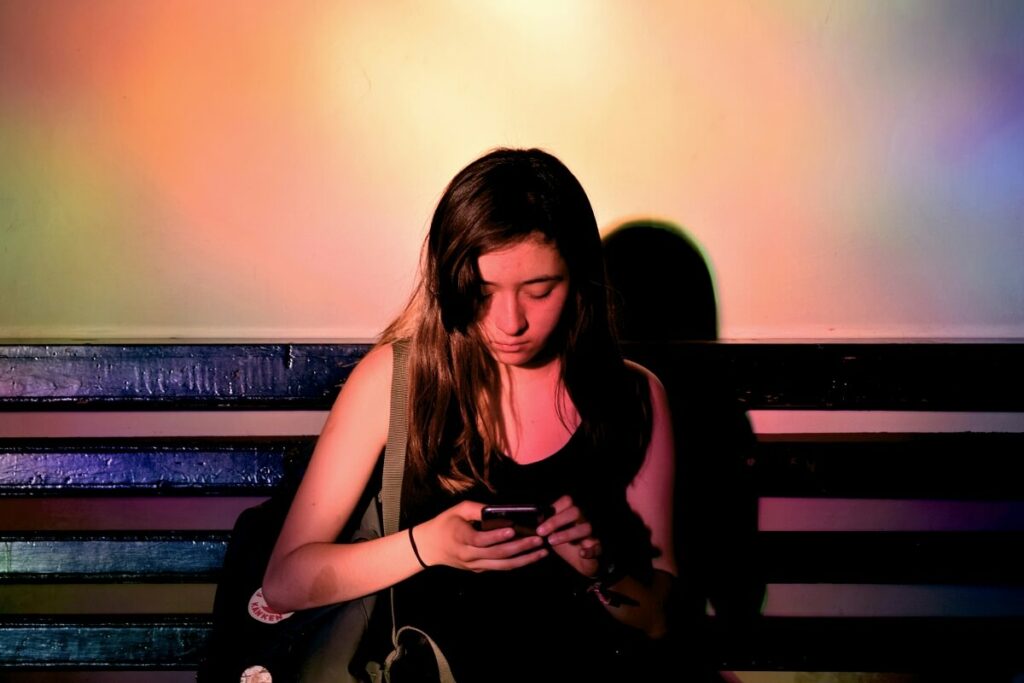
Today’s kids spend a lot of their day scrolling Instagram, Facebook, TikTok, and similar sites. According to the Common Sense Media 2025 Teens & Tech Report, teens spend about 2.5 hours per day on social media. It is indeed concerning and this continued exposure hampers their mood, sleeping, attentiveness, and even relationships.
While social media helps to keep kids connected, for parents, it is often difficult to help teens find a balance between healthy use and overuse. Because of this, understanding how social media affects teenagers is an important first step toward better digital well-being.
How Social Media Affects Teenagers’ Mental Health
Do you ever look at your child endlessly scrolling and wonder what it’s doing to their mind? Parents frequently wonder about the same thing and search on Google; how does social media affect mental health? The reality is, endless scrolling has many emotional and psychological effects on teens.
- Constant time on the screen and emotional dependence can cause increased stress and anxiety.
- Teens frequently compare themselves to others who live unrealistic lifestyles online leading to insecurity and low self-esteem.
- “Likes,” “comments” and notifications stimulate dopamine in the brain causing compulsive checking.
- Digital validation becomes more important than self-confidence in real life.
When parents understand how social media affects mental health, they are better able to recognize early signs such as irritability, withdrawal or sleeplessness.
The Positive Impact of Social Media on Teenagers

Social media is good when done wisely. So, the following are some factors that showcase the positive impact of social media on teenagers nowadays.
- Enhances Creativity: Teens can express themselves through video and reels, pictures, art, and meaningful writing.
- Improves Learning: Educational pages, creators and online communities introduce new ideas to explore.
- Builds Global Awareness: Social media engages teenagers in exploring other cultures, social issues and experiences across the world.
- Promotes Communication and Cultural Exchange: There are communities within social media where they feel heard and supported if they share something.
When used wisely, social media can enhance a teen’s ability to learn, express, communicate, and gain self-esteem. This balanced approach introduces teens to the enhanced effects of social media while not endangering their mental health issues.
The Negative Impact of Social Media on Kids’ Wellbeing
Excessive time spent on social media can influence kids significantly. So, any teenager may experience the following things.
- Cyber Bullying: Comments made online, trolling, and online fighting can all trigger self-esteem and feelings of insecurity in children.
- Unrealistic Beauty Standards: Beauty filters and well-groomed lifestyles make children think they have to appear or live a certain way. Slowly this erodes their body image and self-esteem.
- FOMO and Stress: Teens feel pressure to be up-to-date, to respond promptly and constantly need to be involved socially online.
- Disruption of Sleep: Scrolling online into the sleeping hours disrupts healthy sleep patterns and leaves kids feeling fatigued.
The negative impact of social media causes more difficulty when these kids use this avenue to escape real-life situations. Parents who are aware of these conditions can provide timely help to ensure healthier digital usage.
Teens and Social Media Use — Finding the Right Balance

When it comes to teens and social media use, finding the balance is so important for their emotional and digital well-being. Parents will do better if they steer their children toward healthier online habits.
- Promote Conscious Usage: Encourage teens to choose deliberate browsing over endless, mindless scrolling. This helps to keep their screen time intentional and managed.
- Establish Realistic Boundaries: Implement screen-time guards while modeling strong digital habits at home. Children learn more from what their parents do than what they say.
- Talk about Digital Borders: The conversation about online behavior should flow freely rather than being restricted.
- Using Smart Monitoring Tools: Take advantage of TiSPY’s Social Media Tracker, Instagram Tracker and Facebook Tracker. They can aid parents in analyzing app usage frequency and online time of their kids to create a safe and supportive digital environment.
Smart Digital Wellbeing Tips for Parents
Just a few simple digital wellbeing strategies can make a huge difference in kids’ online behavior. So, do the following.
- Create an open atmosphere for family conversations related to emotional triggers and online encounters.
- Establish “no-phone zones” when they have meals, do study, or at bedtime.
- Involve teens in the process of deciding which apps should be tracked or restricted.
- Educate them about online safety, which includes privacy settings, safe browsing, and identifying inappropriate content.
- Deploy TiSPY’s Social Media Tracker and let them know that it is about their safety, not for constant surveillance.
These small changes are successful in helping teen parents create healthier digital habits for their children.
Conclusion
In summary, social media can affects teenagers both positively and negatively. It all lies in how they use it, and how much parents are monitoring them.
Also, create awareness, communicate with them, and take advantage of smart monitoring tools. So, trace your kids online activity with TiSPY’s social media tracker to stay tension-free and keep your child safe.


